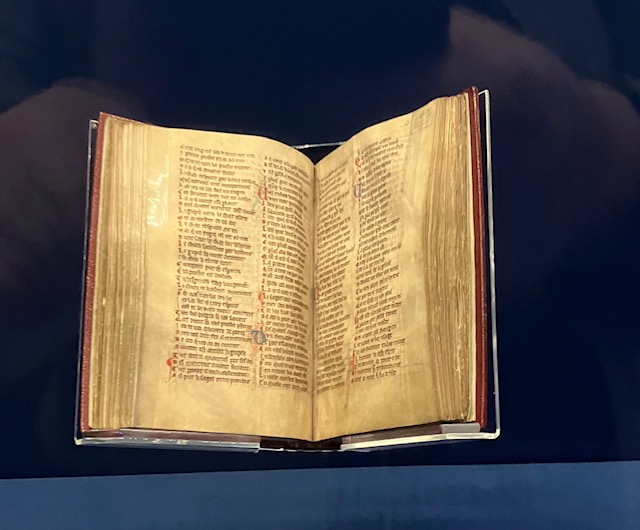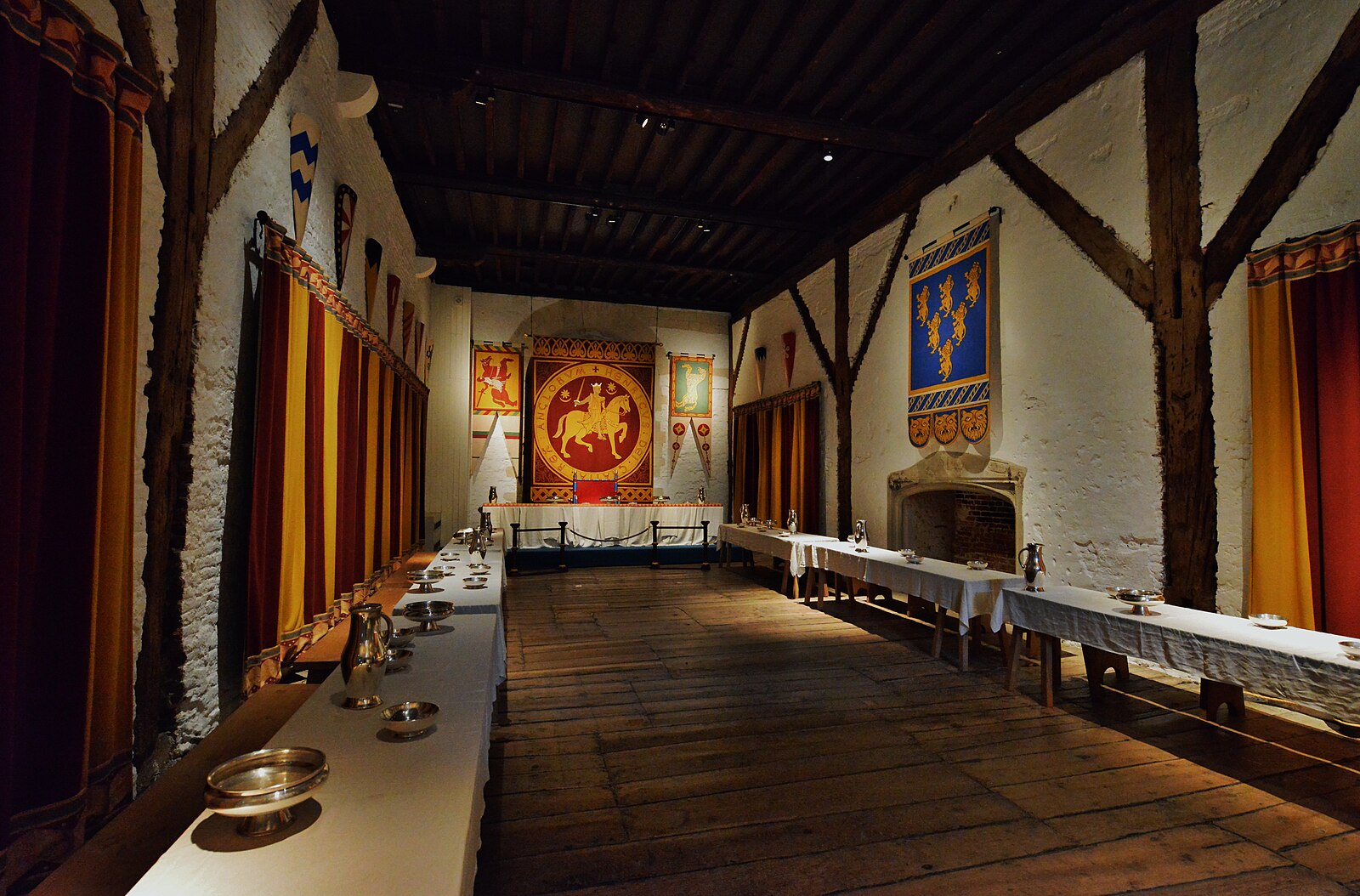By Amy Louise Morgan

Marie de France, Fables and Lais. Possibly Oxford (England), 1250s-1270s. The British Library Harley MS 978, on display at the British Library’s Medieval Women: In Their Own Words Exhibition (c) British Library
Marie de France is one of the most well-known yet mysterious women writers of the medieval period. Often noted as the first female poet writing in Old French, she is the cited author of three, potentially four texts: the Lais, a collection of twelve short poems written around the 1170s; the Fables (known as the Ysopë), a collection of fables likely composed between 1189 and 1208; the Espurgatoire seint Patriz, a translation of the Cistercian Monk H. de Saltrey’s Tractatus de Purgatorio Sancti Patricii dating to around 1190; and finally, La Vie seinte Audree (The Life of Saint Audrey), a hagiography detailing the life, death and miracles of Saint Audrey dated roughly to c. 1200.
Everything that we know about Marie is taken from her works and the only concrete evidence that we have is her name which is, unusually for many authors of the time, stated in each text. She also tells us in the epilogue to the Fables that she is of France which is why it is accepted that she was a French writer who was active in the English court during the reign of Henry II (1133-1189) and his wife, Eleanor of Aquitaine (1124-1204). Even though it is impossible to identify who Marie was and there is a growing debate amongst scholars about whether these works should be attributed to one single author, it is undeniable that Marie represents an extremely significant example of medieval women’s writing. Her rich works offer us incredible insight into life, love, and spirituality in the twelfth and early thirteenth-centuries.
Considering the little that we know about Marie de France, and the questions surrounding single authorship of the four texts making up her corpus, it is unsurprising that it is very difficult to firmly situate her in a location. However, one historic property does open up a window into late twelfth-century culture and that is Dover Castle’s Great Tower. The Great Tower was built by Henry II in the 1180s as part of an extensive rebuilding campaign in order to create an impressive stronghold fit to entertain important guests travelling to England to visit the shrine of Thomas of Becket in Canterbury.

The Great Tower, Dover Castle. Credit: DeFacto, CC BY-SA 4.0 via Wikimedia Commons
The Great Tower was restored by English Heritage in 2008-2009 to allow visitors to experience the twelfth-century court as it would have looked when first built. As well as the King’s Hall, King’s Bedchamber, and the Chapel of Thomas Becket, the project developed another Guest Hall which has been furnished for a twelfth-century banquet. It is in lavish, colourful, and richly decorated spaces like this banquet hall that we can imagine Marie de France’s magical, thought-provoking, and popular lais about love and courtly society being shared.

The Guest Hall, Dover Castle. Credit HARTLEPOOLMARINA2014, CC By-SA 4.0 via Wikimedia Commons
Regardless of whether these works were written by one or more well-educated, multilingual women, we know that her works were well-known and celebrated at court. The restoration of Dover Castle’s Great Tower allows us a glimpse into this vibrant world.

Further Reading:
- Editions of Marie de France’s Works
Curley, Michel J., trans. and ed., Saint Patrick’s Purgatory: A Poem by Marie de France (Binghamton: Center for Medieval and Early Renaissance Texts, 1993).
Gilbert, Dorothy, trans. and ed., Marie de France Poetry (New York & London: W. W. Norton & Co., 2015)
McCash, June Hall & Barban, Judith Clark, trans. and eds., The Life of Saint Audrey: A Text by Marie de France. Jefferson: McFarland & Co., 2006).
Waters, Claire. M., trans. and ed., The Lais of Marie de France: Text and Translation (Peterborough: Broadview Press, 2018).
- Secondary Sources
Brindle, Stephen, Dover Castle (London: English Heritage, 2012).
Brindle, Stephen, Paul Pattison, and David M. Robinson, eds. The Great Tower of Dover Castle: History, Architecture and Context (Liverpool: Liverpool University Press, 2020).
Howes, Hetta, Poet, Mystic, Widow, Wife: The Extraordinary Lives of Medieval Women (London: Bloomsbury Continuum, 2024).
McCash, June Hall, ‘La Vie seinte Audree: A Fourth Text by Marie de France?’ Speculum, 77 (2002): 744-77.
Wogan-Brown, Jocelyn, ‘Recovery and Loss: Women’s Writing around Marie(s) “de France“‘ in Women Leaders and Intellectuals of the Medieval World, eds. Katie Ann-Marie Bugyis, John van Engen, and Katherine Kerby-Fulton (Cambridge: D. S. Brewer, 2020), 169-189.
